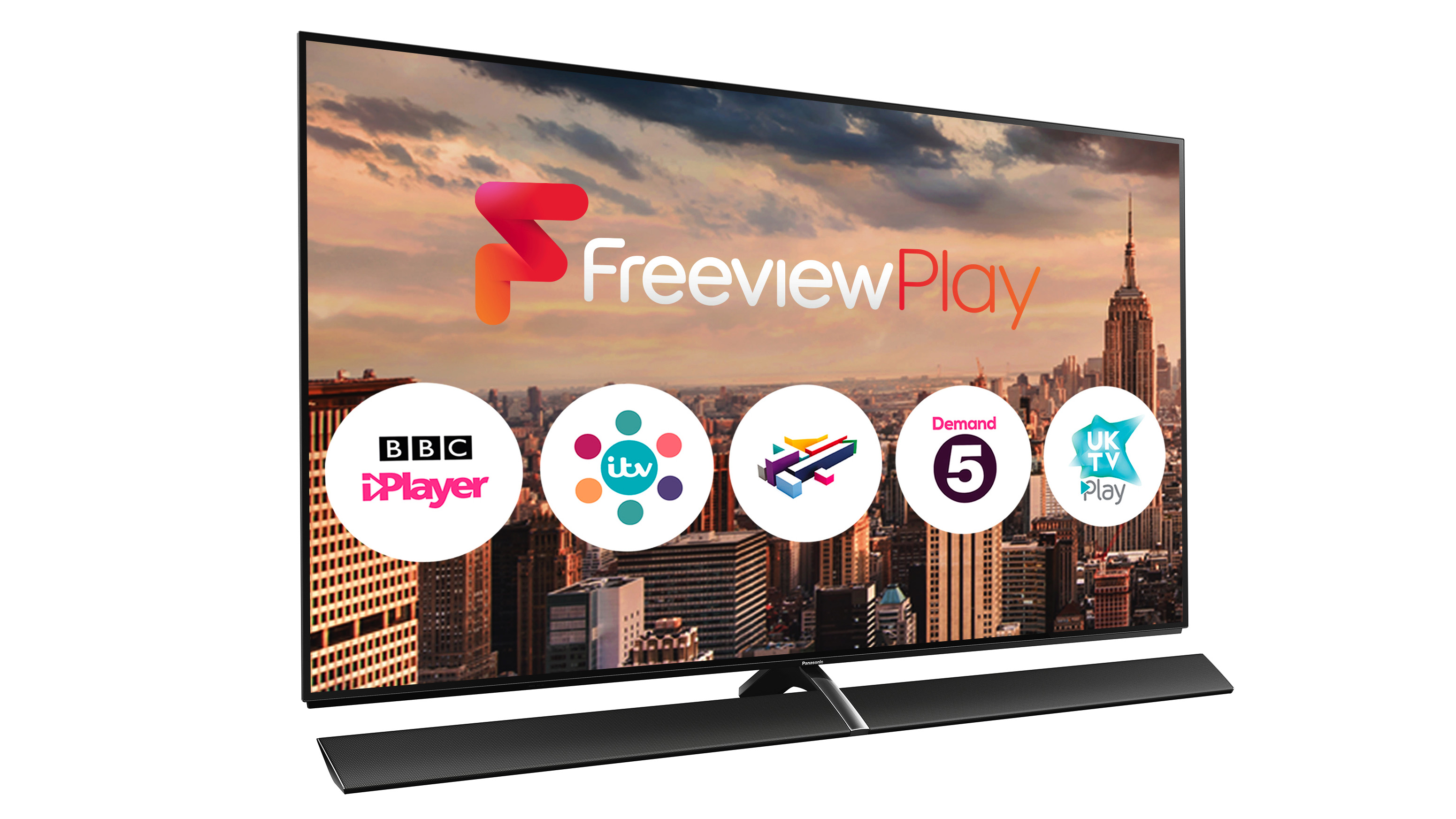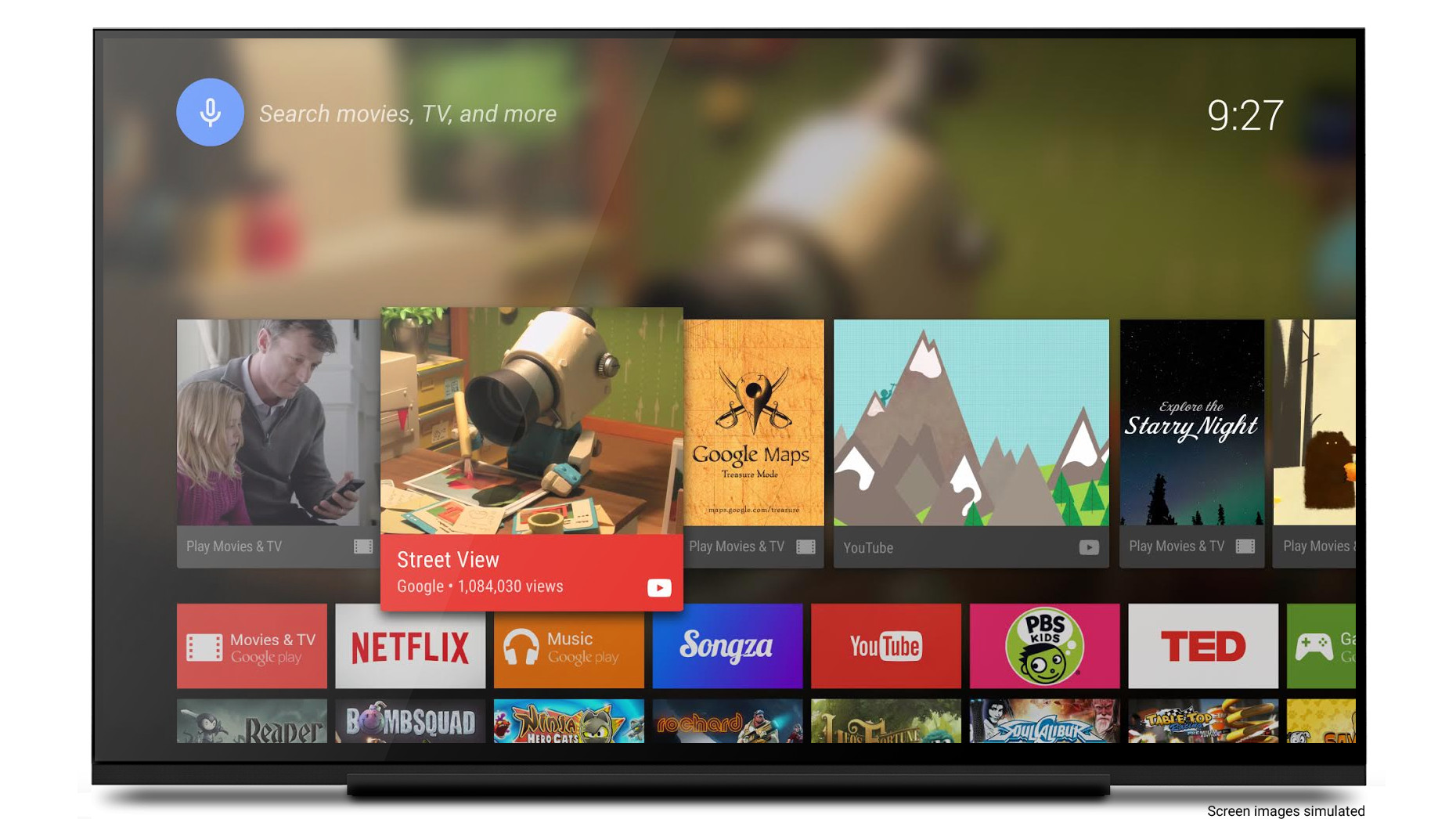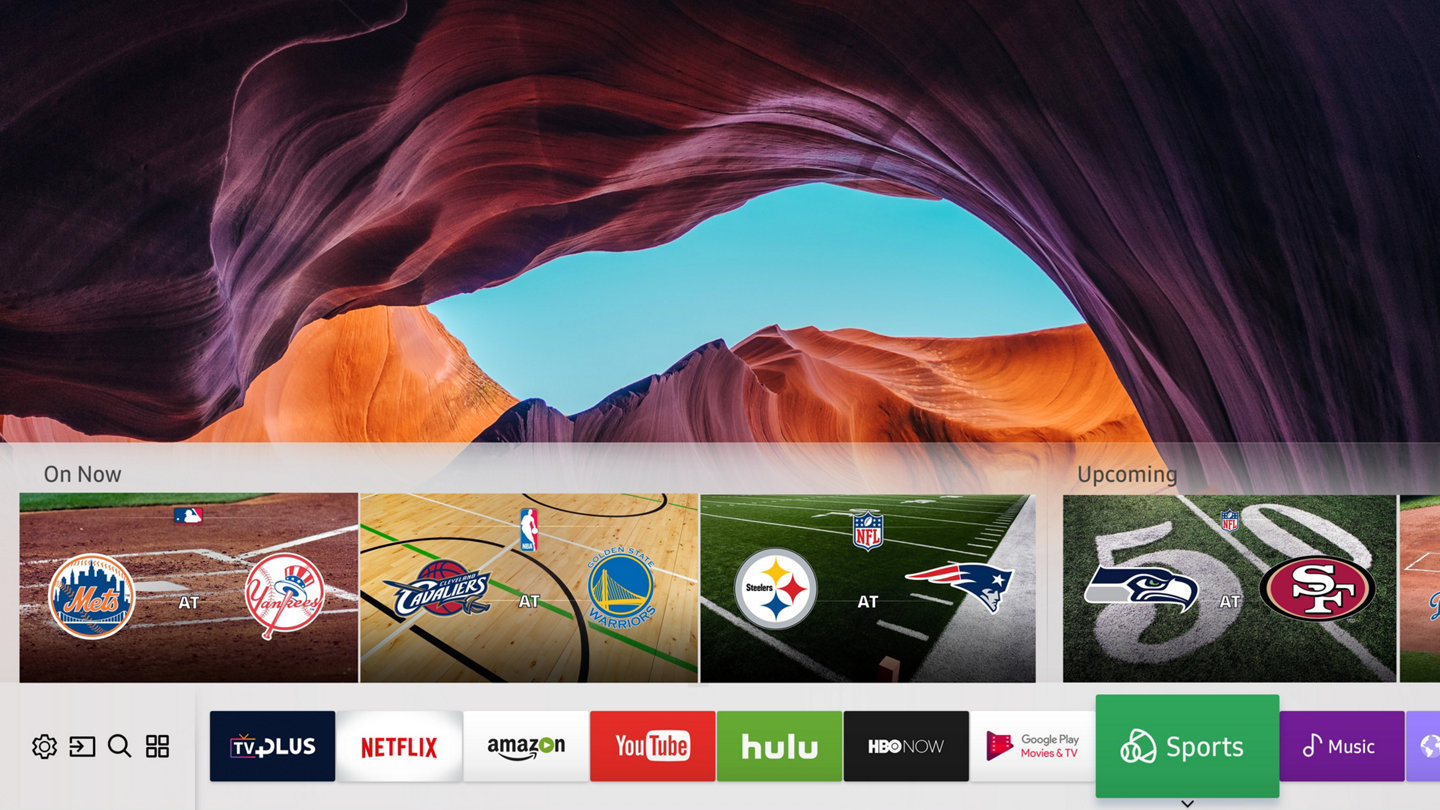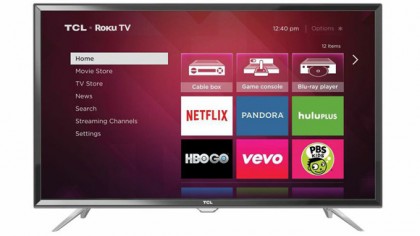The best Smart TVs in the world 2018
Best Smart TV Buying Guide: Welcome to TechRadar's round-up of the best smart TVs and smart TV platforms you can buy in 2017.
"What’s the the best Smart TV I can buy?" It’s a familiar question, especially if you’re looking to replace your TV. A new flatscreen isn’t exclusively about sharper pictures or better sound. The user experience is important too.
These days, connected sets have become ubiquitous. An internet-connected smart platform is the norm, not a luxury; indeed it’s central to how the set works.
The good news here is that TV platforms on offer have matured dramatically over the past few years. TV makers no longer try and emulate the tablet experience on a bigger screen, although you will still see holdovers from that early smart phase on cheaper models - no, you really don’t need Facebook and Twitter on your TV.
Today, the best smart TV platforms actually enhance the viewing experience. They help you access streaming content services and curate your viewing. If you want viewing recommendations, your smart TV should provide them.
Similarly, if you need to simplify streaming from your mobile device, or want to share images quickly and conveniently, your connected set should facilitate that too. And when so many of us have content elsewhere on our home network, be it video files, music or JPEGs, offering seamless access to that through DLNA should be a given.
Most smart TVs give access to leading streaming services like Netflix, BBC iPlayer and YouTube (although some are inexplicably absent on some sets - we’re looking at you Amazon Video). Beyond that, there can be a bewildering array of second (or third) tier streaming apps available to download from the resident portal. These might serve particular interests, such as the subscription-based UFC Fight Pass app, or offer VoD pay movies, such as Wuaki.tv.
Today’s Smart TV ecosystem is split between proprietary platforms tied to a specific manufacturer, like LG’s webOS and Samsung’s Smart Hub, or a generic alternative such as Android TV, as found on Sony and European Philips TVs.
All are usable, functional and most of the time downright enjoyable to use. But while they may look similar on the surface, under the hood there are a plethora of differences between them.
So, what's the best smart TV platform you can buy? We've ranked the the world's major connected TV platforms, putting equal emphasis on ease of use, functionality, stability and content support.
Plus, once you've decided on a smart TV platform, we've included our favorite TVs that use it – that way you'll have a good starting point when it comes time to finding the perfect TV for you.
Just want to know to know the Best Smart TV on every platform? Here you go!

While the 65Q9FN’s Smart TV system is based closely around the Eden platform Samsung has been busy refining for the past couple of years, expect a few tasty new morsels that add to the experience without taking anything away.
For starters there’s now compatibility with Samsung's SmartThings platform, which provides an onscreen hub for monitoring and even controlling other smart devices (fridges, washing machines, lights etc) on your network.
There’s also much better integration of the TV listings and live broadcasting into the TV’s content searching features: There are now hour-by-hour show recommendations, for instance, as well as TV shows getting much more prominence in the content browsing menus.
Samsung has delivered enhanced interactivity with your smartphones and tablets too, as well as some seriously cool new gaming related features.
Overall, a slick, easy to use and helpfully customizable interface belies the impressive sophistication and comprehensiveness of Samsung’s latest smart TV engine.
Read the full review: Samsung Q9FN QLED TV


The Bravia A1 OLED combines innovative engineering with stunning design – making it easily one of the best TVs to sport Android TV.
Not only does it look great, but it sounds great, too, despite not having a soundbar. Instead, it uses a pair of sonic actuators, positioned on the rear of the panel which vibrate, creating stereo sound. Bass comes from an 8cm subwoofer in the stand.
The set’s Android smart platform has Chromecast built-in, making it easy to cast content from a compatible mobile phone. Apps include Netflix and YouTube in 4K.
Picture quality is drop dead gorgeous. A Triluminos wide colour gamut display, colour vibrancy is high, while a 4K Reality Pro picture processor maximizes image detail. Integral to the set’s image success is Sony’s new 4K HDR X1 Extreme image engine. Object-based HDR remastering does a great job making regular SDR TV look like HDR.
If you’re looking for the top Android TV display, the A1 is the model to beat.
Read our full review: Sony Bravia A1 OLED


The 65EZ1002’s smart TV system is pretty to look at, easy to use, and effortless to customise - everything, in other words, that a smart TV interface ought to be.
It’s not the most content rich system in town, perhaps, but I don’t actually think that’s a bad thing. Most of the key TV-centric apps are there (Netflix in 4K HDR, Amazon in 4K HDR, the catch up TV services for the main terrestrial broadcasters via an integrated Freeview Play app), and it’s actually kind of nice not to wade through mountains of dross just to find all the good stuff.
It’s worth adding that since the 65EZ1002 uses Freeview Play to provide its broadcaster catch-up TV services, you can search for shows you’ve missed via an intuitive electronic programme guide that scrolls back as far as seven days.
Read the full review: Panasonic TX-65EZ1002 OLED TV


LG’s webOS smart TV interface was the first one that really felt like it had been developed from the ground up for TV rather than smartphone or PC users: It’s graphically rich, incredibly straightforward and logical in its layout, easily customizable, slick to navigate and sensibly focussed on the sort of TV-centric apps most users actually want a TV to deliver.
These apps include (4K/HDR-capable) versions of Amazon and Netflix, Youtube, NowTV, plus all of the catch up services for the main terrestrial UK broadcasters courtesy of the Freeview Play service, which lets you search for shows you might have missed via an electronic program guide that scrolls back through time as well as forwards.
The latest version of webOS built into the OLED55C7 only really delivers a couple of relatively minor enhancements over previous versions: support for ‘360’ VR clips navigated by waving LG’s magic remote control around; and the option to use the number buttons on the remote control to directly access favorite apps. But there’s no need to fix something that isn’t broken.
Read the full review: LG OLED C7

The smart TV version of Roku both looks and acts like the platform used on streaming video devices like the Roku Ultra and Roku Premiere+: The Home section contains all the apps in your library, while My Feed tracks movies and TV shows you’re interested in and shows you where they can be found. We're also pretty big fans of Roku's universal search feature that rifles through 300+ apps to find movies and TV shows and displays them with the cheapest option first.
Overall, Roku TV is simple, efficient and straightforward enough for most people to pick up and use without a problem.
New for platform in 2017 is the ability to label inputs (labeling one input as Xbox or DVD Player instead of Input 1, etc…), some additional smartphone features and, for the first time, Dolby Vision support. Dolby Vision allows you to get the absolute most from the TV in terms of performance and while tracking down Dolby Vision content is a bit of a hassle, Roku does a good job highlighting all the available content in a new row in the 4K UHD Spotlight app.
Read the full review: TCL P-Series 55P607
- Want something to watch? Check out our best movies on Netflix guide!

1. LG: WebOS
LG rewrote the rulebook for Smart TV platforms, with its webOS. The brand started the trend for minimal, simplified user interfaces back in 2014, and has gradually refined its offering.
We’re now up to the 3.5 iteration of webOS, but LG has shown remarkable restraint with all revisions.
The UI, which is still built around a Launch Bar for apps, inputs and features, remains tidy and customisable. You can change the running order to best suit how you use the set. If you like to Miracast images from your smartphone, grab the Screen Share app with LG's cursor-based Magic Remote and move up further up the pecking order.
App support is excellent. Netflix streams 4K with both HDR and Dolby Vision, as well as Dolby Atmos audio when available. There's also Amazon with UHD HDR and YouTube in 4K. Other options include Now TV, Sky Store, Wuaki.TV plus all the main channel catch-up services.
As we’ve seen on earlier webOS builds, these streaming apps remain open and live, even when you navigate away from them. This means you can pause Star Trek Discovery, browse the TV listings for The Walking Dead, and then return to the action.
Other cool new features include 360 degree video playback (from 360 degree videos on YouTube) and an OLED still image gallery. LG screens also have Freeview Play in the UK, which means a full larder of catch-Up TV.
For US viewers, there's Netflix, Amazon, YouTube and Google Play TV and Movies, as well as Hulu, VUDU, MLB.TV, and FandangoNow.
Five LG TVs with webOS:
- LG OLED65W7 65-inch 2017's wallpaper thin OLED stunner
- LG OLED65E7 65-inch the more affordable OLED in 2017
- LG OLED55B6 55-inch the entry-level OLED from 2016
- LG 49UF770V 49-inch great value, mid-range TV
- LG 65UF950 65-inch slim, beautiful TV

2. Panasonic: My Home Screen 2.0
If you live in the UK, Panasonic's My Home Screen 2.0 is one of the most customisable smart TV platforms around. Built on the open-source code of Mozilla’s Firefox TV OS, Panasonic's My Home Screen 2.0 smart TV interface combines an intuitive minimalism with extensive customisation.
The platform looks simple but has some inspired functionality. The home screen launches with three buttons (Live TV, Apps and Devices), but you can pin more as required, perhaps for a favourite streaming service, or a specific input. There are now also folders for multiple users, while a My App button on the remote can be customised for faster access to favourite content. A revamped Media Player supports 4K HDR10 and HLG HDR.
App provision is good. Netflix streams in 4K with HDR, Amazon Video and YouTube, also offer 4K support.
Catch-up TV service support is integrated through the provision of Freeview Play. This include iPlayer, ITVHub, Demand 5 and All4. Usability is great. The OS is extremely convenient to live with, yet powerful enough to cater for a variety of different users, be they family members who just want their favourite channels pinned to the home screen, to TV enthusiasts keen to dive quickly between sources.
Five Panasonic TVs with Firefox OS:
- Panasonic TX-50DX750 50-inch strikingly affordable 4K TV
- Panasonic TX-65DX902B 65-inch is a thrilling 4K HDR TV
- Panasonic TX-65CZ952 65-inch the only OLED TV from Panasonic
- Panasonic TX-65CR852 65-inch curved 4K TV
- Panasonic TX-50CX802B 50-inch takes picture quality seriously

3. Sony: Android TV
Android TV is the nearest the smart TV universe has to a standardised operating system, but there are still variations between brand executions.
Sony has the most comprehensive Google solution. For UK viewers, it has rather cleverly layered a YouView programme guide platform on top, deftly addressing one of Android TV’s big weaknesses - catch-up TV provision. This You View app ensures that all the main catch-up services are provided, accessible via a roll-back 7 day epg.
Other supporters of Android TV are Philips (via maker TP Vision) and in the US, Sharp. It’s also available on the Nvidia Shield TV streamer and Razer Forge TV.
While other TV platforms make a virtue of their minimalism, Android stacks the screen with various layers of content. Press the Home button on the remote and up pops a full-screen page that's dominated by a carousel of videos from YouTube and from Google Video.
There’s also a row of specific Sony selected content, followed by apps for Netflix, Amazon video, links to the Google Play Store, Google Play Music, Google Play Movies and TV, YouTube and so on.
Owners of Android phones/tablets can use their device to control Android TVs via Sony’s TV SideView app. We also expect to see growing interaction with Google Assistant.
Android screens also have Chromecast built in, which simplifies streaming from mobile Android devices (iOS users can download the AirBuddy app to Google Cast). Controllers from Logitech and Razer also promise gaming without needing a console.
There is a caveat though. In our experience, Android is the least stable of the various Smart Platforms, with Sony TVs exhibiting more than their fair share of failures. It’s not unusual to be notified that various aspects of the Android platform have stopped working. Some of these messages are completely inscrutable. Usually the best option is to simply restart the TV. Google is known to have a major upgrade to the Android platform in the works. Let’s hope it address these concerns.
Five Sony TVs with Android TV:
- Sony Bravia A1 OLED 65-inch Sony's triumphant return to OLED for 2017
- Sony Bravia KD-55XE9005 55-inch is one of this year's most exciting TVs
- Sony Bravia KD-55XE9305 55-inch is Sony's high end LCD for 2017
- SonyKD-65XD9305 65-inch was one of 2016's best televisions
- Sony KD-55XD9305 55-inch has got 4K HDR
Three Philips TVs with Android TV:
- Philips OLED 901F 55-inch OLED with Philips' ambilight technology
- Philips 65PUS7601 65-inch LCD set from Philips, again with ambilight tech
- Philips 65PUS8901 65-inch LCD set with ambitious rear-projection technology

4. Samsung: Smart Hub and Tizen OS
Samsung is another brand keen to keep things simple. Its Tizen OS clearly owes much to LG's webOS interface, in so much as it consists of icons, apps and shortcuts all accessible via icons held a horizontal strip across the bottom of the screen. A dynamically changing ‘Recent’ box in the far-left corner cycles between recently used apps and TV channels.
But it’s not overly intelligent. A featured section in the centre promotes apps you haven't used lately, which can feel like irrelevant adverts, and they keep returning. This isn't based on your activity or habits, which is a shame.
We like the fact that on-screen icons can be changed; a sense of identity is welcome when it comes to some AV inputs and key apps you use everyday.
The OS cuts down on clutter, although this sometimes works against navigation; there are plenty of occasions when it's necessary to go hunting for a specific app. Thankfully that's made easier by a Smart Hub multimedia page that divvies-up content from apps and from your own USB sticks/home network.
For reasons best known to itself, Samsung has not signed up to Freeview Play, which means it misses out on the elegance of a roll-back programme guide, however it does offer access to all UK catch-up TV apps; BBC iPlayer, ITVhub, All4, Demand 5 are all here, as is Netflix, Amazon Video and YouTube.
In the US, there's Netflix, Amazon Instant Video, Hulu, HBO Go / HBO Now, YouTube, Spotify and Vudu. (Want even more apps? Check out our 10 best Samsung Smart TV apps gallery.)
There are a few nice extras in the Tizen Smart Hub, too, such as a split-screen option for watching live TV while browsing an app, but Samsung's effort doesn’t quite match LG’s webOS or Panasonic’s My Home Screen OS.
Five Samsung TVs with Tizen OS:
- Samsung Q9F QLED TV 2017's 65-inch flagship
- Samsung UE55KS9000 2016's 55-inch flagship TV
- Samsung UE65JU6000K 65-inch that rocks old hardware in style
- Samsung UE48JS8500 48-inch petite 4K UHD TV
- Samsung UE48JU7500T 48-inch mainstream curved 4K TV

5. TCL, Sharp, Hisense, Haier: Roku TV
Despite Android TV and all the proprietary portals available, there's still room for other connected smart offerings. In Europe, Vestel has its own stripped back smart platform, which is used for TV companies it manufactures for, including Toshiba and JVC. It’s unfancy but does the basics.
In the US, TV maker Element now offers a screen with Amazon’s Fire TV OS built in.
Perhaps the most interesting second division smart OS is Roku TV. Announced back in 2014 for TCL TVs, Roku TV has found support with low-cost US TV suppliers. In 2017, you can find Roku TV on some Haier, Hisense, Insignia, Sharp and TCL TV models.
As a platform, Roku TV borrows the interface and feature set from the company's popular media streamers, the Roku 2, Roku 3, Roku 4 and Roku Streaming Stick.
What that means is that you'll find a universal search function able to scan over 30 different apps like Netflix, Google Play TV and Movies, Amazon, VUDU and more to find you the lowest price on the TV show or movie you want to watch, as well as around 4,500 channels of content to watch.
Add to that some neat features like a dedicated app that helps you keep track of upcoming movies and TV shows via the My Feed section and a private listening mode when you want to watch TV without disturbing the whole house.
Two TVs with Roku TV:
- TCL Roku TV 40-inch affordable 1080p TV
- 4K TCL Roku TV 55-inch content-rich 4K TV
Contributer : Techradar - All the latest technology news https://ift.tt/UKCt3N

 Reviewed by mimisabreena
on
Tuesday, May 08, 2018
Rating:
Reviewed by mimisabreena
on
Tuesday, May 08, 2018
Rating:














No comments:
Post a Comment